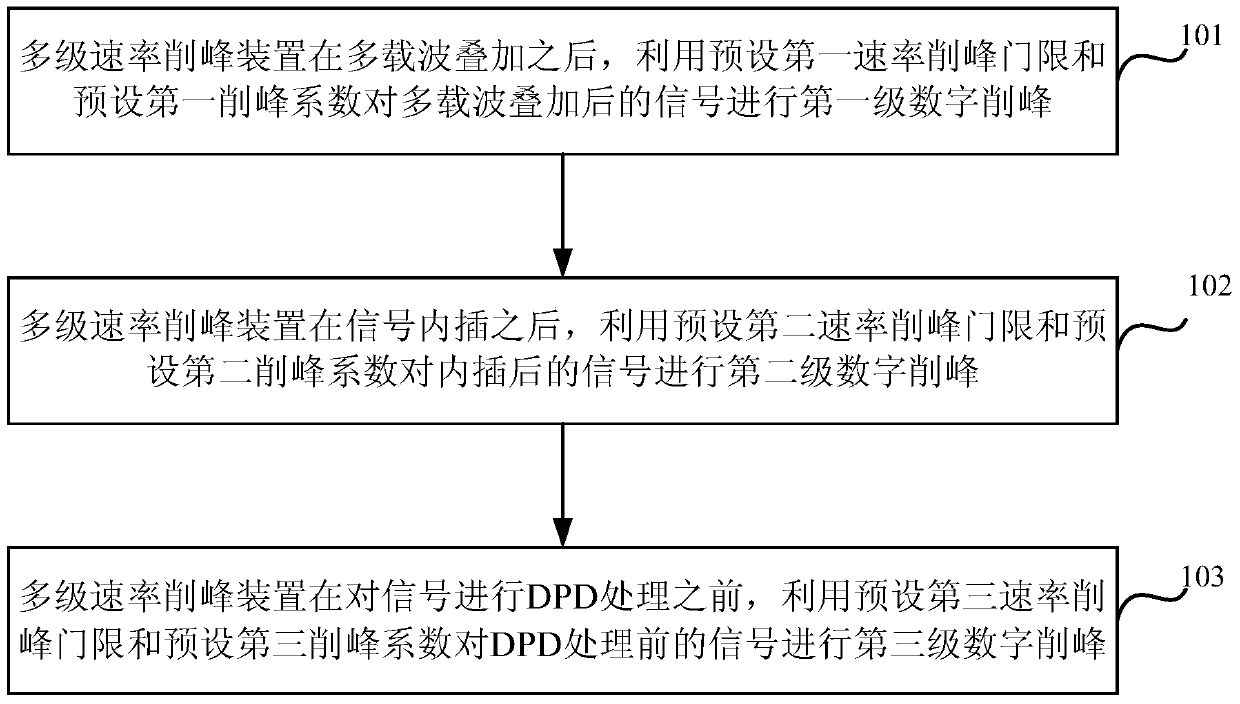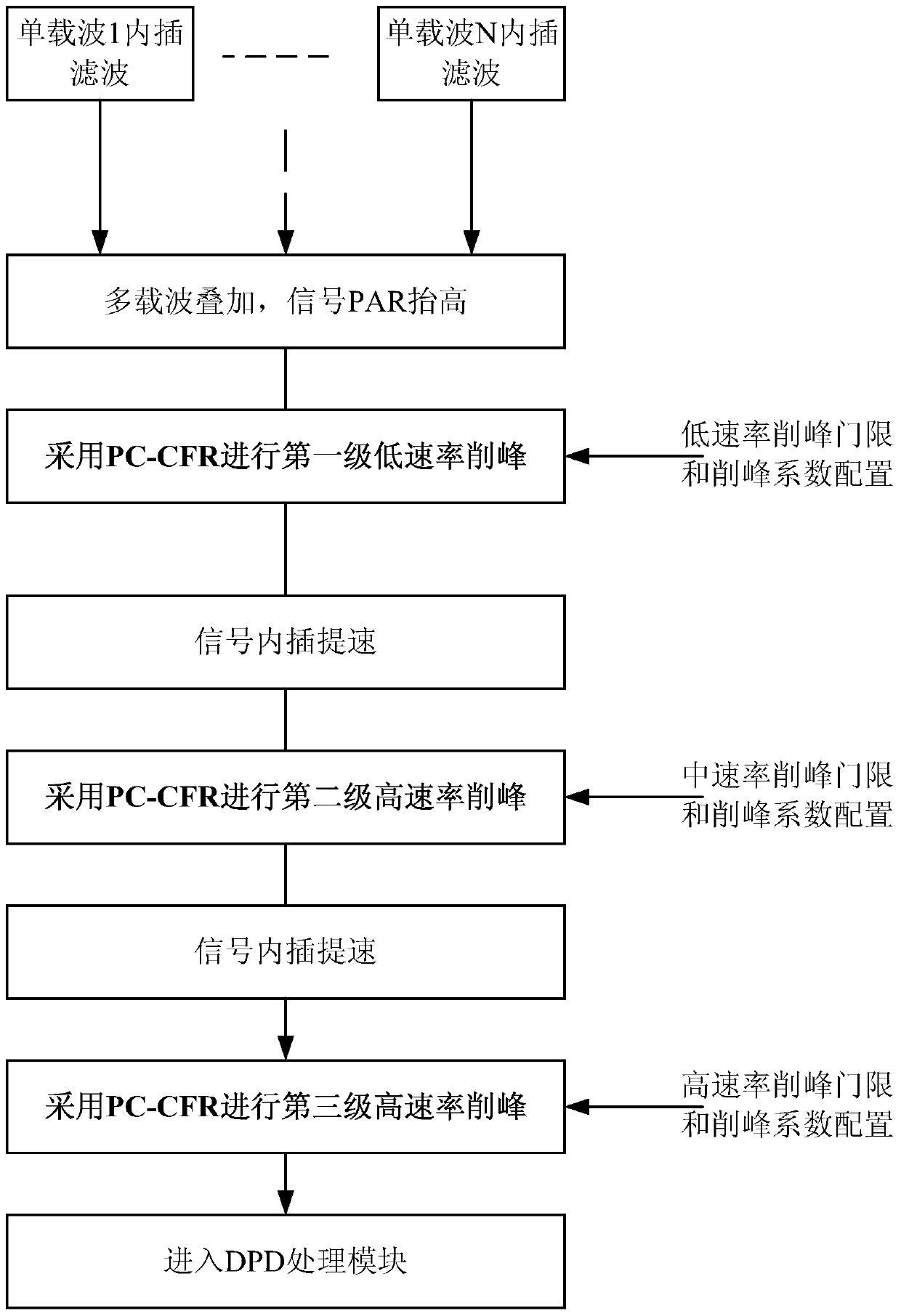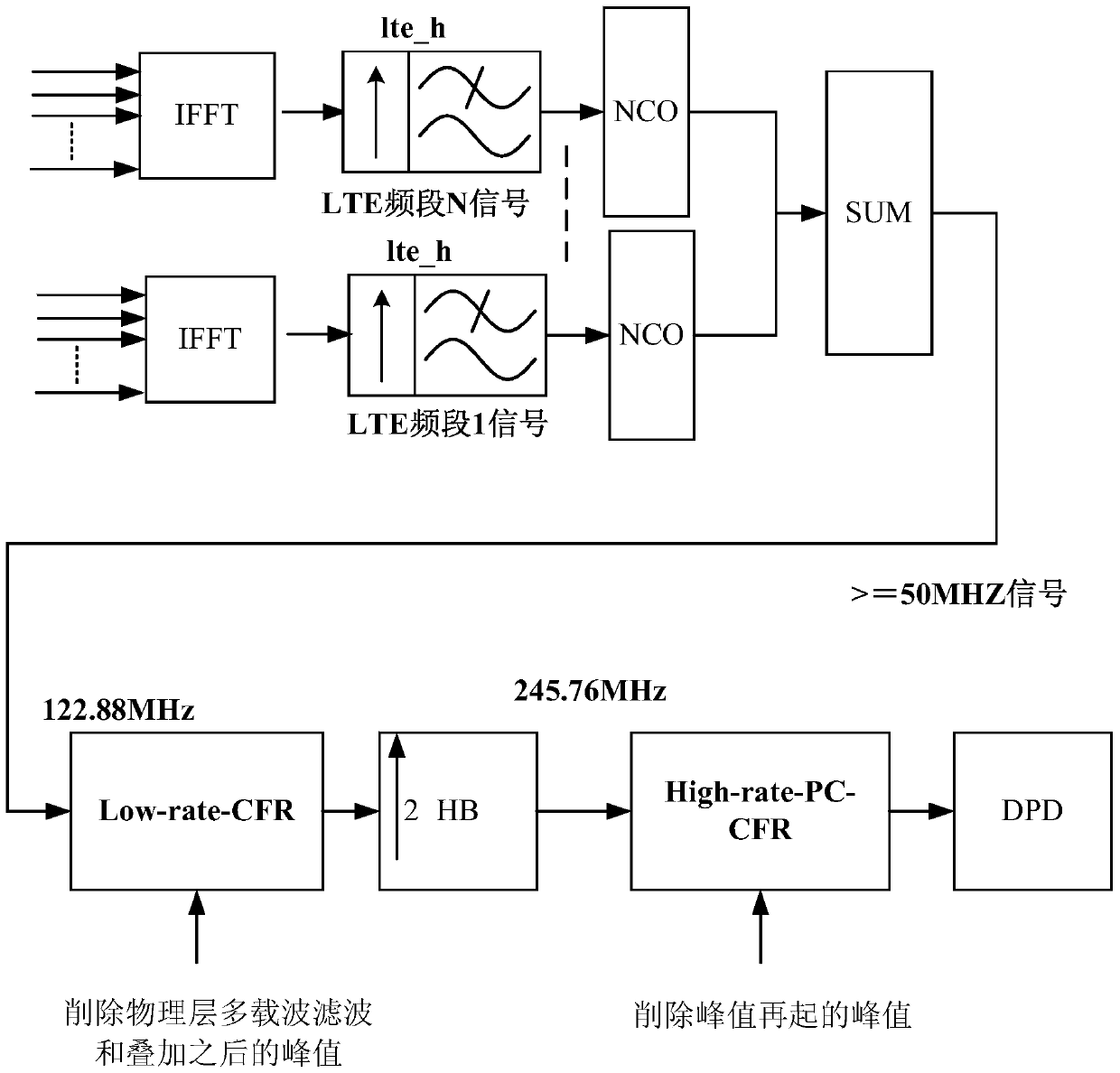A multi-stage rate peak clipping method and device
A rate and peak-shaving technology, which is applied in the field of multi-level rate-shaving methods and devices, can solve problems such as low complexity, excessive peak-to-average ratio, and peak regeneration, so as to save hardware resources, achieve good peak-shaving effects, and improve performance Effect
- Summary
- Abstract
- Description
- Claims
- Application Information
AI Technical Summary
Problems solved by technology
Method used
Image
Examples
Embodiment 1
[0032] In view of the problems in the prior art, the first embodiment of the present invention provides a multi-rate peak clipping method, such as figure 1 As shown, the multi-rate peak clipping method may specifically include the following steps:
[0033] Step 101: After the multi-carrier superimposition, the multi-rate peak clipping device uses a preset first rate peak clipping threshold and a preset first peak clipping coefficient to perform a first-stage digital peak clipping on the signal after the multi-carrier superimposition.
[0034] Step 102: After the signal is interpolated, the multi-rate peak clipping device uses a preset second rate peak clipping threshold and a preset second peak clipping coefficient to perform a second-level digital peak clipping on the interpolated signal.
[0035] Step 103: Before performing DPD processing on the signal, the multi-rate peak clipping device uses a preset third rate peak clipping threshold and a preset third peak clipping coefficient t...
Embodiment 2
[0049] Based on the same inventive concept as the above method, an embodiment of the present invention also provides a multi-rate peak clipping device, such as Figure 8 As shown, the multi-rate peak clipping device includes:
[0050] The first processing module 11 is configured to perform a first-level digital peak clipping on the signal after the multi-carrier superposition by using the preset first rate peak clipping threshold and the preset first peak clipping coefficient after the multi-carrier superimposition;
[0051] The second processing module 12 is configured to perform a second-level digital peak clipping on the interpolated signal by using a preset second rate peak clipping threshold and a preset second peak clipping coefficient after the signal is interpolated.
[0052] It also includes: a third processing module 13, which is configured to perform a second-level digital peak clipping on the interpolated signal by the second processing module using a preset second rate pe...
PUM
 Login to View More
Login to View More Abstract
Description
Claims
Application Information
 Login to View More
Login to View More - R&D
- Intellectual Property
- Life Sciences
- Materials
- Tech Scout
- Unparalleled Data Quality
- Higher Quality Content
- 60% Fewer Hallucinations
Browse by: Latest US Patents, China's latest patents, Technical Efficacy Thesaurus, Application Domain, Technology Topic, Popular Technical Reports.
© 2025 PatSnap. All rights reserved.Legal|Privacy policy|Modern Slavery Act Transparency Statement|Sitemap|About US| Contact US: help@patsnap.com



